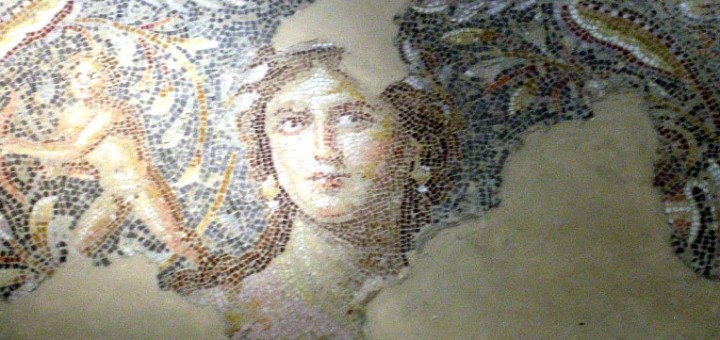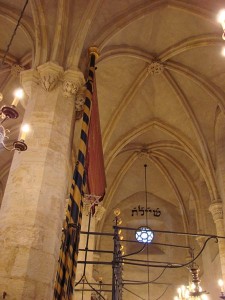Consciously or unconsciously, visual art influences our perception of God. Classical images shown to us as children, paintings memorized during art history class to fulfill college requirements, and the occasional visit to an art museum increase our exposure to visual depictions of the divine.
For the past 2,000 years or so, churches, particularly the Catholic and Greek Orthodox sects, used iconography and other forms of art to convey theological messages. From John the Baptist’s trademark wild hair to the Madonna’s traditional blue dress-red mantel outfits, church-backed artists labored tirelessly to tell a more-or-less consistent narrative about the nature of the divine through their patron-approved works.
Influenced by a blend of Biblical law, access to financial backing and artistic training (or lack thereof), and the cultural climate of their times, Jewish artists and synagogue architects often chose a different path. While in the Roman times, some synagogues possessed elaborate mosaics and paintings portraying divine visitations and the zodiac, like this one in Tzippori, many synagogues dating from much later in Europe chose to forego such overt imagery altogether. Some, like the oldest preserved synagogue in Europe, Prague’s Old-New Synagogue, simply plastered the interior white and painted a small selection of biblical quotes and instructions on the walls, allowing the grand, modified Gothic arches and otherwise visually silent space to speak for itself. Even in the New World, while some synagogues maintained simple lines and relatively modest appearances, others relished more elaborate styles. Interestingly, since the Roman period, there are relatively few examples of Jews returning to non-abstract visual arts to express theological doctrine in their sacred spaces. (As a matter of fact, I can’t think of any – can you? Let me know in the comments below if you can!) Nonetheless, the ubiquitous nature of other religions’ divine imagery can be hard to shake off as we attempt to conceive of the unimaginable.
Interested in the intersection between visual art and God-language? Join Rabbi Lauren Ben-Shoshan and Rabbi Miriam Philips on Saturday, January 21, in Room 15 of Session Two, as a part of The Feast of Jewish Learning to continue the discussion.








Comments are moderated and will not appear immediately.